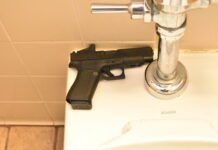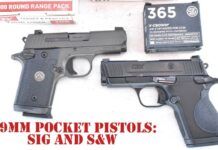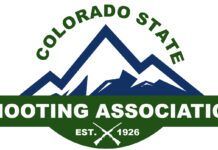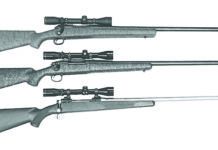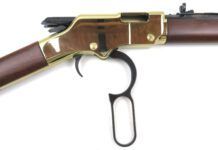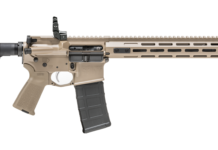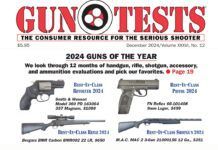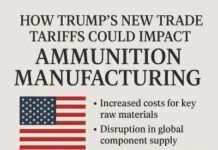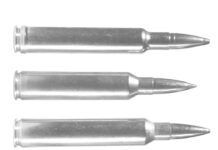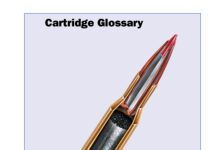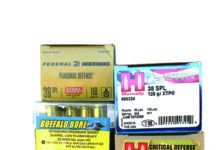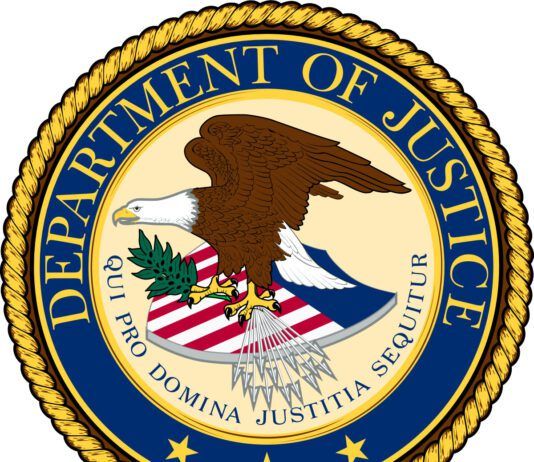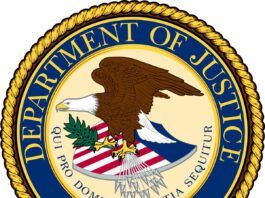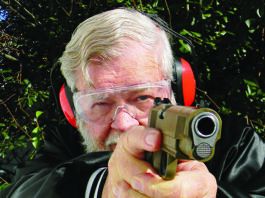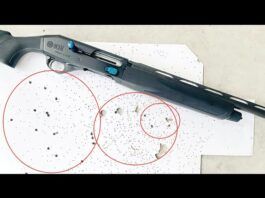The A List: 2012 Guns & Gear
Toward the end of each year, I survey the work Ben Brooks, R.K. Campbell, Roger Eckstine, Austin Miller, Ray Ordorica, Robert Sadowski, John Taylor, Tracey Taylor, Ralph Winingham, and Kevin Winkle have done in Gun Tests, with an eye toward selecting guns, accessories, and ammunition the magazine's testers have endorsed. From these evaluations I pick the best from a full year's worth of tests and distill recommendations for readers, who often use them as shopping guides. These choices are a mixture of our original tests and other information I've compiled during the year. After we roll high-rated test products into long-term testing, I keep tabs on how those guns do, and if the firearms and accessories continue performing well, then I have confidence including them in this wrap-up.—Todd Woodard
When you buy a CZ USA SP-01 Shadow Custom No. 91029 9mm, $1200, from CZ Custom, or any custom shop, you are paying for applied expertise, not just parts. The most noticeable difference to the shooter was that the double-action first shot was not an issue. The sense of transition from DA to SA on our Custom SP-O1 was almost nonexistent. Double-action pull weighed in at 7.0 pounds, and the single-action press required only 3.0 pounds of pressure. But altogether they seemed less. This made our Double Tap test all the more exciting. Beginning with a double-action press, first shots rang out in elapsed times ranging from 1.05 seconds to 0.94 seconds. The fastest split was 0.25 seconds.
In the February 2012 issue, we also tried the Double Tap test beginning with a single-action first shot. After the initial run, our shooter's split times dropped from 0.21 seconds to an average elapsed time of 0.175 seconds. Nevertheless, our shooter reported that his control was suffering due to the flat-sided grips. For his hands, the full-profile rubber grips were more suitable.
From the bench none of our groups were as large as 2.0 inches across. The 115-grain rounds produced an average size group measuring about 1.7 inches. We split hairs calculating averages for the Black Hills 124-grain hollowpoints and the American Eagle 147-grain rounds, 1.23 inches versus 1.29 inches respectively.
In the multiple-targets test the first two shots on target qualified as a near perfect double, with two holes touching inside the A-zone. This was also the fastest run, with the score sheet showing a 2.19-second first shot and a 4.73-second total elapsed time. Average first shot and elapsed time averaged about 2.41seconds/4.82 seconds. T-1 was scored 9 A's and one shot less than an inch low. T-2 showed 8 A's with one hit left of center and the other just right of center. The head shots formed about a 4-inch-wide group on both targets, but in both cases one hit was wide right.
Three More Small Nines: Ruger, Kel-Tec, And Sig Sauer Complete
The idea of a backup pistol is an old one, going back to the days of flintlocks. Modern shooters want something more useful than a single- or double-shot pocket flintlock, and there are lots of modern pocket pistols available, particularly in semiautomatic persuasion. We've been looking at small 9mm pistols over the past year or so, and this month we've added a few more to the list. These three are the new Sig Sauer P290RS ($758), Ruger's LC9 ($443), and the Kel-Tec P-11 ($377). Some time back (April 2011) we wrung out a Ruger LC9 against the Kel-Tec PF-9 (which Ruger apparently copied), and the Kel-Tec won. We wondered if the ten-shot Kel-Tec P-11 would do as well as the slimmer PF-9.
These three test guns were all DAO, which means you can't cock them to get a light trigger pull. You simply have to heave on the trigger until the gun fires. This does nothing for helping you put your shots where you want ‘em, so that tends to make these guns best suited for close-range work. In short, we had our work cut out for us during our 15-yard accuracy testing.
All three guns locked their slides back after the last round. The Sig and Kel-Tec could drop their hammers a second time if the first strike failed to fire the round. Ruger's design required working the slide to eject the unfired round and load a new one, which tactically might be the better solution. If you have a bad round, get rid of it instead of beating a dead horse. We tested with Black Hills' 147-grain JHP, Cor-Bon's 110-grain Pow-R-Ball, and with the Ultramax 115-grain RN lead-bullet loads. In addition we tried several unreported types of ammo. Here's what we found.
Working the 1873 Springfield Trap-Door Single-Shot Rifle
If the internal parts of the 1873 Springfield breechloader look the same as those of the 1861 muzzleloader, that's because most of them are.
Taurus Thunderbolt C45BR .45 LC
Rhode Captures Fifth-Straight Shooting Medal
Browning Cynergy Sporting 12 Ga. No. 013231427
Pedersoli Officer’s Model 1873 Trapdoor .45-70
Fulton Armory M1 Carbine .30 Carbine
Ruger SR556 5.56 NATO/223 Rem.
Mossberg SA-20 No. 75771 3-Inch 20 Gauge
Marlin 980S 22 LR
LSI/Hatsan Escort PS-20 HAT00115 3-inch 20 Gauge
One of the ongoing arguments between wingshooters is the 12 vs. 20 discussion. The short version of that issue can be summed up in two questions: Can I get away with the smaller gauge for the shooting I do?, or, Do I need the deeper and wider shotshell selection that the 12 gauge offers? One of the major reasons hunters choose a 20 over a 12 is the former's smaller frame, weight, and recoil. Though they may already own a 12, many field sportsmen wind up reaching for their 20s because the smaller gun is easier to handle, and there are just a few situations—layback goose hunting and spring turkey hunting, to name two—in which the bigger 12-gauge payload might make a difference.


